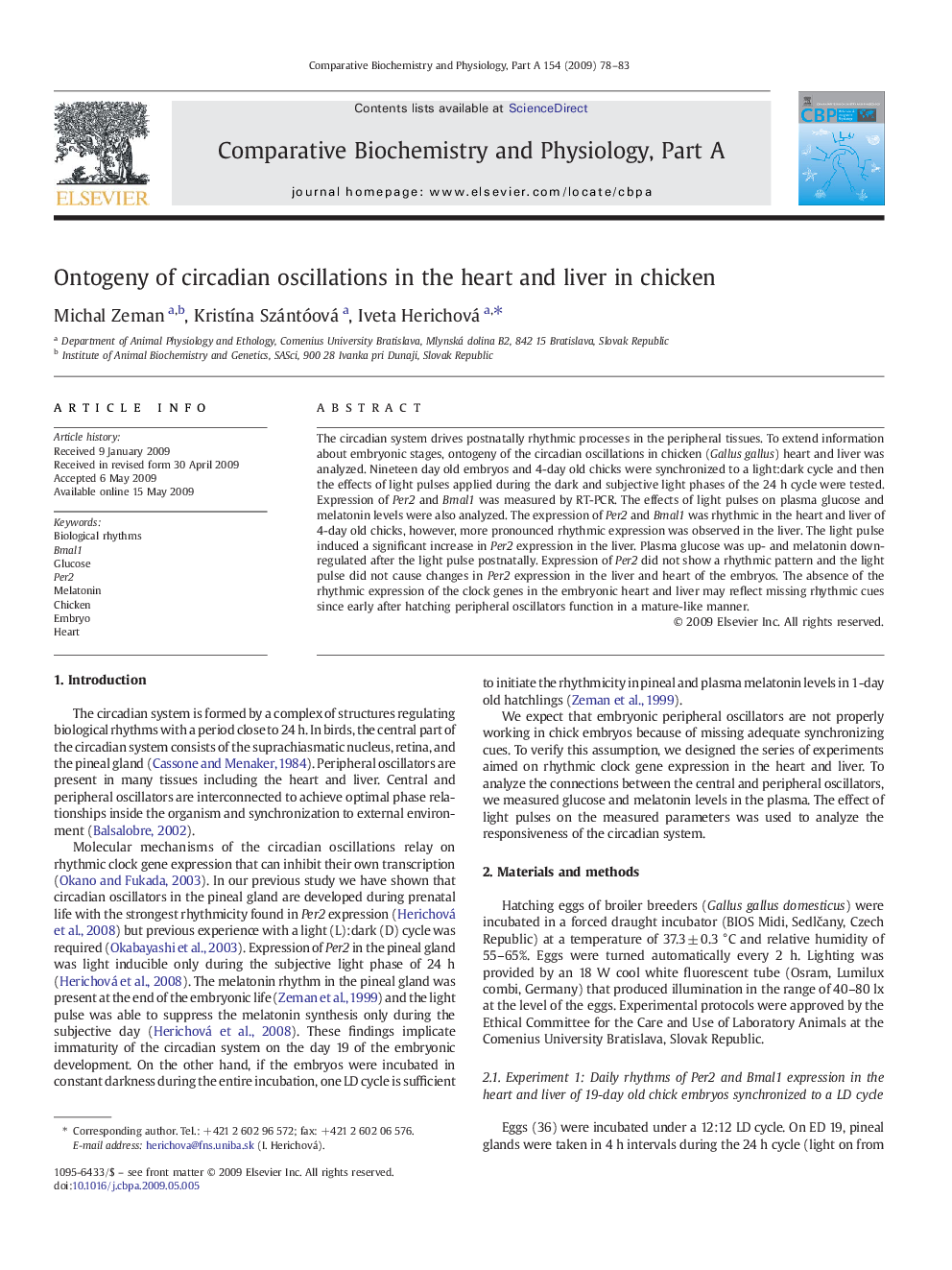| Article ID | Journal | Published Year | Pages | File Type |
|---|---|---|---|---|
| 1973427 | Comparative Biochemistry and Physiology Part A: Molecular & Integrative Physiology | 2009 | 6 Pages |
The circadian system drives postnatally rhythmic processes in the peripheral tissues. To extend information about embryonic stages, ontogeny of the circadian oscillations in chicken (Gallus gallus) heart and liver was analyzed. Nineteen day old embryos and 4-day old chicks were synchronized to a light:dark cycle and then the effects of light pulses applied during the dark and subjective light phases of the 24 h cycle were tested. Expression of Per2 and Bmal1 was measured by RT-PCR. The effects of light pulses on plasma glucose and melatonin levels were also analyzed. The expression of Per2 and Bmal1 was rhythmic in the heart and liver of 4-day old chicks, however, more pronounced rhythmic expression was observed in the liver. The light pulse induced a significant increase in Per2 expression in the liver. Plasma glucose was up- and melatonin down-regulated after the light pulse postnatally. Expression of Per2 did not show a rhythmic pattern and the light pulse did not cause changes in Per2 expression in the liver and heart of the embryos. The absence of the rhythmic expression of the clock genes in the embryonic heart and liver may reflect missing rhythmic cues since early after hatching peripheral oscillators function in a mature-like manner.
